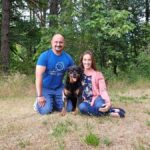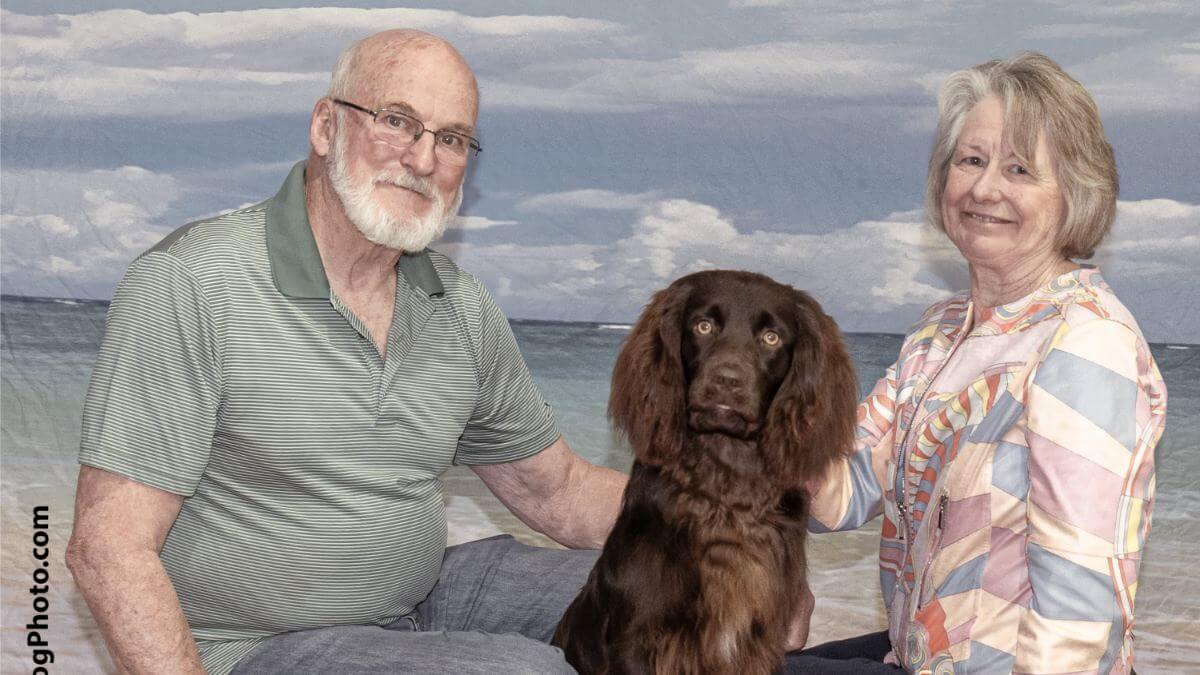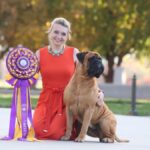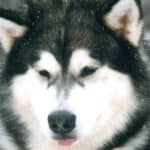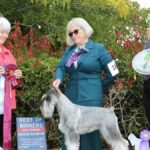Interview with Dan & Sharon Kauzlarich, Breeders of Beekauz Kennels Boykin Spaniels & Nova Scotia Duck Tolling Retrievers
- Please tell us a little bit about yourself. Where do you live? How many years in dogs? How many years as a breeder? What is your kennel name?
- What is your “process” for selecting show puppies? Performance puppies?
- In your opinion, is your breed in good condition overall? Any trends that warrant concern?
- As a Preservation Breeder, can you share your thoughts on the sport today? How’s the judging these days? What do you think about the number of shows?
- In your opinion, is social media good for the sport? Is it harmful?
- What are the biggest challenges facing the dog show community as a whole today and how can these be addressed?
- What are some of the positive changes you’ve seen in the sport over the past decade?
1. We are Dan and Sharon Kauzlarich of Beekauz Kennels in Farmington, Illinois, and we have owned and raised Boykin Spaniels for 40 years and Nova Scotia Duck Tolling Retrievers for 30 years. Our first dogs were hunting pets. We became interested in participating in dog sports when our daughter, Katie, began using our dogs in 4H. She and the dogs loved it. So, when our breeds became AKC eligible our path was set.
2. As simple as it sounds, when looking for our next show or hunt prospect, the puppy that stands still on the grooming table is the puppy that is most likely to stay. A puppy that can stand on its own has structure which will allow him to go from the show ring to the hunt field. Additionally, we seek outside opinions on the litter. A person not connected to the litter can often point out the good, or not so desirable, features on a puppy.
As simple as it sounds, when looking for our next show or hunt prospect, the puppy that stands still on the grooming table is the puppy that is most likely to stay.
3. For the most part, both Boykin and Toller breeders are working hard to not see their breed split between Conformation and Hunting stock. That is a very good thing. Our show dogs are often in the field or running a Hunt Test. With both breeds, the overall trend seems to be to breed bigger dogs. Breeders and judges need to focus on the Breed Standards and keep the Boykin Spaniel the size of dog that “doesn’t rock the boat,” and the Toller as “the smallest of the retrievers.”
4. As mentors to potential judges, it is refreshing how most are truly interested in learning the function of these hunting dogs; why size, coat, structure, and attitude are important in keeping these rare-breed dogs as is. The availability of shows is good. Clubs are making longer clusters of shows, which makes it more efficient for showing our dogs. Having low-density population breeds often means traveling a good distance, so shows that are greater than just a weekend certainly helps.
5. Some of both. Technology allows for easy access to information. People seeking breeders can easily use this tool to find puppies and breeders. People willing to take the time can use social media to learn all kinds of things about the breed, be it health concerns, puppy availability, or breeder location. However, information is not always accurate, and once put to the web, it tends to never go away.
6. AKC’s addition of a boatload of new titles is diluting the importance of Conformation and Hunt titles. For example, the new “Fetch” title has been reported as a way to evaluate a retriever’s natural ability. No, it’s not, as retrievers retrieve birds in various hunting situations. I understand people enjoy these venues, but these should be changed to certificates of achievement instead of titles.
7. I appreciate AKC.tv showing the outside community many of the premier dog events. It seems like this is a great way to pique people’s interest in becoming involved in dog sports.
